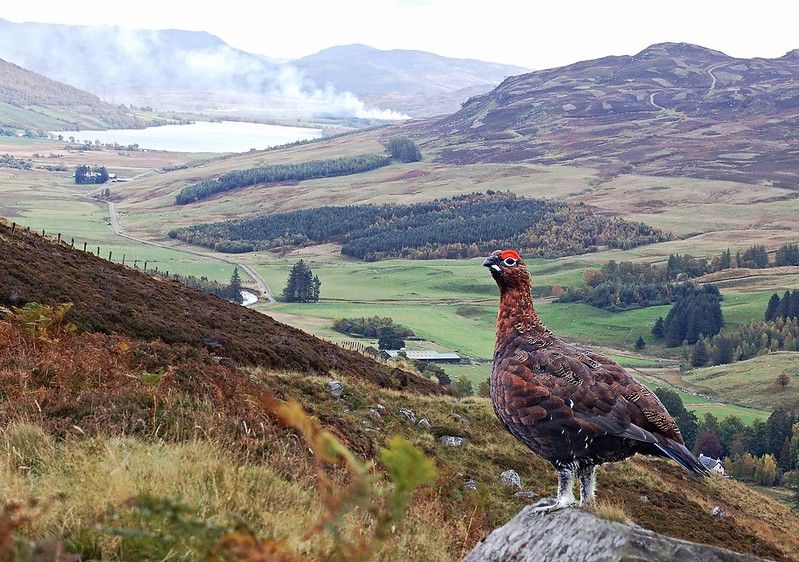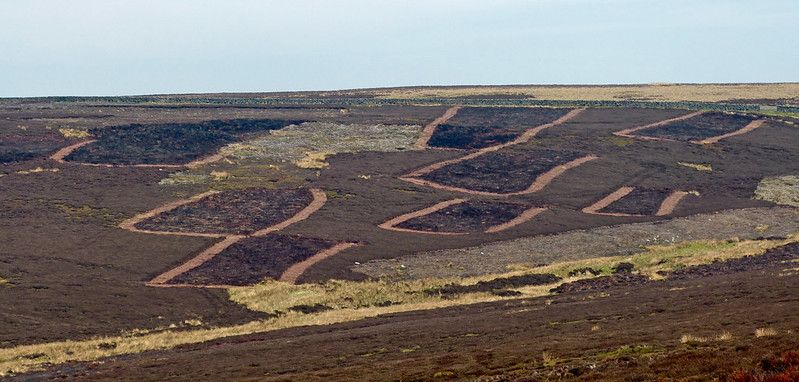
The nest protectors
Sometimes, protecting hen harriers means watching them die.
Even in mid-summer, British moorlands can be bleak and forbidding.
And that’s especially true when you’re venturing upon them at night, in secret, and you suspect there is someone nearby with a gun. But some birds are worth it.
“Every nesting attempt was precious,” recalls Bob Elliot. For 14 years, he worked at the RSPB, leading the charity’s investigation work and tackling wildlife crime, particularly the persecution of the hen harrier – a rare and beautiful bird that likes to nest on grouse moors.
Grouse moors dominate large areas of the British uplands. They are intensively managed by gamekeepers to sustain high levels of red grouse, a plump rust-coloured bird that is shot recreationally during the shooting season, starting on the “glorious twelfth” of August.

These unfortunate gamebirds are also favoured by hen harriers and other raptors. This predation can make grouse moors economically unviable – and so it is not uncommon for gamekeepers to turn their guns on the hen harriers instead. A government-backed study published last year showed that hen harriers were ten times more likely to die or disappear in areas predominantly covered by grouse moor than in other habitats.
For many conservationists, this is unconscionable. So, once a hen harrier has made its nest, investigators from the RSPB will go onto the moor to protect the chicks and their parents in person.
There are two ways to do this: overtly and covertly. The first method is easier and more comfortable. If the RSPB owns the land, protectors will watch the nest from a distance, in a shelter or a bird hide. There’s nothing terribly secret about it: jobs are advertised online and there is an element of public engagement to the work.
Covert work, on the other hand, happens secretly, when investigators receive intelligence of plans to kill or disturb a bird on private land. The RSPB’s own team of trained investigators will then head into the field, not to intervene, but to collect evidence of the crime.

“I’ve been involved in covert monitoring of nest sites, and that has revealed some awful incidents where people have come and shot or disturbed the birds,” says Elliot.
He confesses that it can be nerve-wracking work: “You’d be accessing that land in a way so you weren’t detected, and you’d be doing that in ways I can’t tell you about. Once you're there, you’ve got the physical and mental issues of wondering what’s going to happen to them and preparing yourself if something does.”
Nest protection can take place night or day, and it is vital to avoid detection. It is not illegal to monitor nests on open access land, as long as no property is damaged, but alerting a gamekeeper to the presence of a hen harrier nest is rarely an effective way to help the bird.
“There are times of really high adrenaline and edge of your seat stuff,” says Howard Jones, who is currently an investigations officer for the RSPB. “But when something happens, your focus kicks in and you just want to capture the best evidence possible and try to create these cases that can go to the police and help hen harriers.”
Still, successful prosecutions are vanishingly rare. It is difficult for cases to get to court, and, when they do, gamekeepers tend to have well-resourced legal teams, says Jones. Case in point: the RSPB filmed the shooting of a hen harrier at the Cabrach Estate in Scotland in 2013, yet the case against the gamekeeper was dropped by the Crown Office four years later after the video was deemed inadmissible as evidence in court.
Despite these hurdles, it remains important to maintain a presence on the moors and to keep collecting evidence.
“If you’ve got a successful covert film, that should be dissuasive. It shows that you can’t go out and kill things on your grouse moor, because someone might be watching. And that could lead to serious issues,” says Elliot. “People lose their jobs and there’s a whole world of pain in the media for people who are caught killing birds of prey. Whether they are convicted or not is a different matter.”
There is also a scientific imperative to build up a clearer picture of the threats faced by raptors on Britain’s grouse moors.
Secretly monitoring individual nests is clearly a suboptimal way to protect hen harriers and will not eradicate raptor persecution, and many conservationists want the government to act. Some are calling for an outright ban on driven grouse shooting, arguing not only that it leads to raptor persecution but also that intensive management harms biodiversity and contributes to climate change through the repeated burning of peat bogs.
The RSPB supports a licensing system, with sanctions for any grouse moors where illegal activity has been confirmed, although it is currently reviewing that policy. It disavowed the government’s own Hen Harrier Action Plan, which relied on a voluntary approach, accusing it of being “ineffective”. The charity has also employed satellite tagging devices, allowing a clearer insight into where the birds live – and where they die.
“It has highlighted that, with a significant proportion of our hen harriers, their satellite tags inexplicably stop transmitting on land managed for driven grouse shooting. There’s a clear pattern. This science will inform the governments of England and Scotland that they need to reform driven grouse shooting and protect hen harriers and other birds of prey,” says Jones.
“Unless the laws are strengthened to help the police, things will be very hard for hen harriers for years to come.”
Photo credits: Radovan Václav, Mark Hope, Andrew
Subscribe to our newsletter
Members receive our premium weekly digest of nature news from across Britain.
Comments
Sign in or become a Inkcap Journal member to join the conversation.
Just enter your email below to get a log in link.








